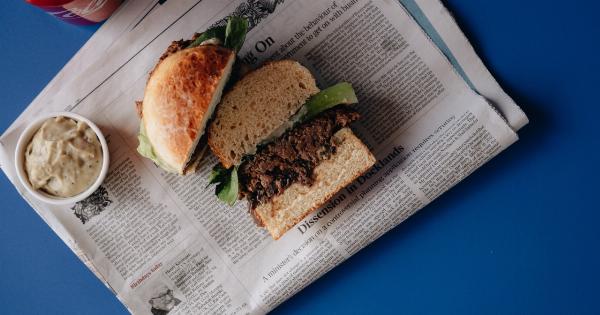Knowing your daily caloric requirements is essential for maintaining a healthy diet and achieving your fitness goals.
Whether you want to lose weight, gain muscle, or simply maintain your current weight, understanding how many calories your body needs each day is crucial for success. This article will guide you through the process of discovering your daily caloric requirements and provide helpful tips for managing your calorie intake.
What are Calories?
Before we delve into calculating daily caloric requirements, let’s clarify what calories actually are. In nutrition, a calorie is a unit of energy.
It is used to measure the amount of energy that food provides when consumed and digested by the body.
Factors Affecting Daily Caloric Requirements
The number of calories you need each day depends on several factors, including:.
- Height and weight
- Age
- Gender
- Activity level
- Basal metabolic rate (BMR)
Calculation Methods
There are different methods you can use to calculate your daily caloric requirements. Let’s explore a few of the most common ones:.
1. Harris-Benedict Equation
The Harris-Benedict Equation is one of the oldest and most widely used methods for calculating BMR and daily caloric requirements. The equation takes into account your age, weight, height, and gender to provide an estimate of your calorie needs.
2. Mifflin-St. Jeor Equation
The Mifflin-St. Jeor Equation is considered to be more accurate than the Harris-Benedict Equation, as it is based on a larger sample size and uses simpler calculations.
This equation also incorporates age, weight, height, and gender to determine your BMR and daily caloric requirements.
3. Activity Multipliers
In addition to calculating your BMR, you need to consider your activity level to estimate your daily caloric requirements accurately. Activity multipliers are used to determine the increase in calorie needs based on your level of physical activity.
These multipliers range from sedentary (little to no exercise) to highly active (intense exercise or physical labor).
Putting It All Together
Now that you have an understanding of the factors affecting your daily caloric requirements and the calculation methods available, let’s walk through the process of discovering your specific needs:.
- Calculate your BMR using the Harris-Benedict Equation or the Mifflin-St. Jeor Equation.
- Determine your activity level and multiply your BMR by the corresponding activity multiplier.
- Adjust your calorie intake based on your goals (weight loss, maintenance, or muscle gain).
Tips for Managing Caloric Intake
Once you have determined your daily caloric requirements, the challenge lies in managing your calorie intake effectively. Here are some tips to help you stay on track:.
1. Plan Your Meals
Create a meal plan that aligns with your daily caloric requirements and includes a balance of macronutrients (carbohydrates, proteins, and fats).
Preparing your meals in advance can prevent impulsive food choices and keep you on track with your calorie goals.
2. Portion Control
Be mindful of portion sizes and avoid overeating. Use measuring tools or visual cues to help you gauge appropriate portion sizes for different food groups.
Paying attention to portion control is key to maintaining a balanced diet and managing your calorie intake.
3. Stay Hydrated
Drinking an adequate amount of water throughout the day can help you feel fuller and curb unnecessary snacking. Additionally, dehydration can sometimes be mistaken for hunger, leading to excessive calorie consumption.
4. Be Mindful of Hidden Calories
Keep an eye out for hidden sources of calories in your diet. Certain condiments, dressings, and beverages can contribute a significant number of calories without providing much nutritional value.
Read labels and choose low-calorie alternatives whenever possible.
Conclusion
Discovering your daily caloric requirements is the first step towards achieving a balanced and healthy lifestyle.
By understanding the factors that affect your calorie needs and utilizing the calculation methods mentioned in this article, you can tailor your diet to meet your specific goals. Remember, managing your calorie intake is a lifelong journey, and making sustainable changes to your eating habits is crucial for long-term success.






























